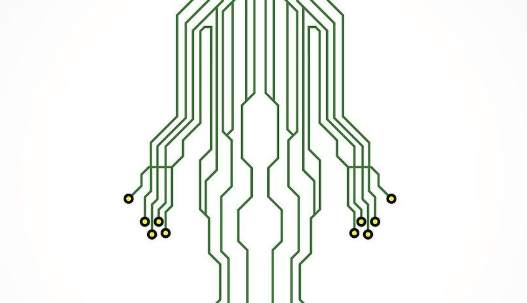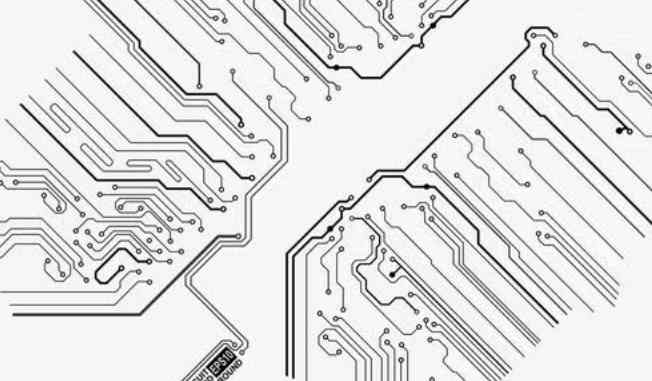
First, the choice of etching fluid
The choice of etching fluid is very important, it is important because it directly affects the precision and quality of high density fine wire image in PCB manufacturing process. Of course, the etching properties of etching fluid are affected by many factors, including physical, chemical and mechanical aspects. The following is a brief introduction:
1. Physics and chemistry
1) The concentration of etching liquid: according to the principle of metal corrosion and the structure type of copper foil, the concentration of etching liquid should be determined by the test method. It should have a larger choice, that is, the process range is wider.
2) Chemical composition of etching solution: the etching rate and etching coefficient are different with different chemical components of etching solution. For example, the etching coefficient of the commonly used acid copper chloride etching solution is usually &; Alkaline copper chloride etching fluid coefficient up to 3.5-4. However, the etching solution based on nitric acid in the development stage can achieve almost no side erosion problem, and the side wall of the etched wire is close to vertical.
3) Temperature: temperature has a great influence on the characteristics of etching liquid. Usually, in the process of chemical reaction, temperature plays a very important role in accelerating the flow of solution, reducing the viscosity of etching liquid and improving the etching rate. But the temperature is too high, it is easy to cause some chemical components in the etching liquid volatilization, resulting in the chemical component proportion imbalance in the etching liquid, at the same time, the temperature is too high, may cause polymer resistance


The destruction of etching layer will affect the service life of etching equipment. Therefore, the etching fluid temperature is generally controlled within a certain process range.
4) The thickness of copper foil used: the thickness of copper foil has an important influence on the wire density of the circuit graph. Thin copper foil, etching time is short, side erosion is very small; On the other hand, the lateral erosion is large. Therefore, the thickness of copper foil must be selected according to the design technical requirements and the wire density and wire precision requirements of the circuit graphic. At the same time, the copper elongation, surface crystal structure, etc., will constitute a direct influence on the characteristics of etching fluid.
5) Circuit geometry: If the distribution position of circuit graphic wire in X direction and Y direction is not balanced, it will directly affect the flow speed of etching liquid on the board. Similarly, if the location of the widely-spaced wires and the widely-spaced wires on the same board are in the condition, the etching will be excessive. Therefore, this requires the designer in the circuit design, should first understand the feasibility of the process, as far as possible to achieve the entire board circuit graphic uniform distribution, wire thickness should be consistent as far as possible. Especially in the production of multi-layer printed circuit boards, a large area of copper foil as the ground layer, has a great impact on the quality of etching, so it is recommended to design into a network pattern is appropriate.
2 Mechanical aspects
1) Type of equipment: the structure of equipment is also one of the important factors affecting the characteristics of etching fluid. At the initial stage, the method of immersion in the groove is adopted to etch the printed circuit board with wide wire. The precision requirement is not high, and it is the equipment structure form that can be adopted. For fine wire, narrow spacing, high precision, high density printed circuit board, the structure of the immersed etching equipment is not suitable, the horizontal mechanical transmission structure of the etching equipment and the use of swinging nozzle device, so that the copper surface of the substrate printed circuit etching more uniform, but the horizontal device structure will cause the surface of the over corrosion phenomenon, so the development and development of vertical spraying technology. At the same time, the etching equipment must also have a device to prevent the thin coppered foil laminate from easily winding on rollers and transfer wheels during etching and to ensure that the metal on the surface of the wire pattern is not scraped or scratched. Therefore, in the selection of etching equipment, special attention should be paid to the structural form, whether to achieve the requirements of fast etching rate, uniform etching and high etching quality.
2) Spray technology:
1 Spray shape: the current general spray system should have the conditions and structural form, is in the spray system to take a chain, cone structure, all the nozzle spray out of the etching liquid fan and alternate with each other, so that all the transmitted printed circuit boards are covered by the etching liquid and can flow evenly. The process test results show that:
· Stationary spray: average etching depth is 0.20mm and standard deviation is 0.01mm.
· Oscillating spray: average etching depth is 0.21mm and standard deviation is 0.004.
2. Swing mode: The current actual production experience has proved that the arc swing is ideal, which can make the etching liquid reach the whole plate surface, improve the consistency of etching rate, and provide a reliable guarantee for the production of high-density fine wire.







